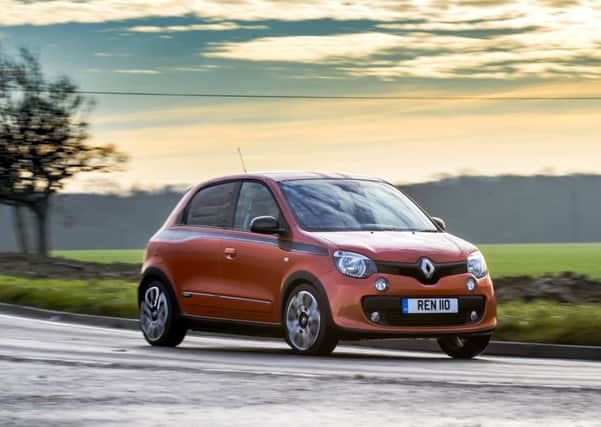Review: Renault Twingo GT


Maybe they reasoned it would rob sales from the newly launched, slightly larger and more expensive Clio.
Instead we had to consider what might have been every time we went across the Channel. They are still there, looking as cute as ever with those bashful lidded headlamps and, oh, I don’t know, that je ne sais wot which makes France both annoying and irresistible en route to Spain. Sometimes they are distraught, like the sadly abandoned one I saw last month in Vilnius with flat tyres and a winter’s dead leaves as a shroud. A hangman graphic on the bonnet added to its gloomy end.
Advertisement
Hide AdAdvertisement
Hide AdThe second Twingo, 15 years later, was built with RHD in Slovenia and was fairly ordinary and uninspiring – arriving in Britain along with the Fluence electric hybrid which is distinguished by being one of the worst-sorted cars I have driven.
Today’s third Twingo is a non-identical twin of the Smart FourFour. Both are built in Slovenia and share an unusual rear engine, rear wheel drive chassis, this time with the practicality of rear doors and a tailgate. There is ample room to seat four adults in a cabin with lots of visual interest in the trim design and materials. It has Gallic charm.
The Smart is finished in a bi-tone paint job which as lustrous as a Jaguar. It looks, indeed, smart. The Renault is the fat child of the union. It has a chirpy face and some body similarity to a Fiat 500. The short front and lack of an engine there allows a brisk turning circle – a good car for town.
My demonstration car was painted a 1970s orange, striped with black – the go-faster lines converging along the roof.
Et voila ... the Twingo GT by Renaultsport. The engine is a rorty three-cylinder 898cc petrol turbo with 108.5bhp and a decent 125 lb ft of torque, driving through a close ratio five-speed manual gearbox.
It zips through the gears so niftily that it feels quicker than its 0-62mph time of 9.6 seconds.
This eager feel endows what is a fairly ordinary little car with character. If you were allowed to zip through your housing estate with zeal this would do the job. “Gosh, it’s got a kick in it,” remarked a passenger/driver who also thought the indicator click was too quiet.
Beyond 55mph, it’s noisy and starts running out of zest. Its sting has gone but it remains sort of fun – and it looks the part thanks to the racy stripes and bits of body extensions.
Advertisement
Hide AdAdvertisement
Hide AdThere’s more GT stuff inside, with multi-colour front seats, orange stitching and trim detailing. There’s a rather loose, removable oddments box under the central stack. Up top there’s a playful ripple texture on the binnacle and a lighter roof lining adds to the bright ambitions.
Within a few miles you have noticed that it is noisy at the back – a combination of the engine and the fatter rear tyres – 205/40/17 vs 185/45/17 at the front (Yokohama Blue Earth as tested). At higher speed – say the motorway – you’ll notice an unsettling flaw in stability – engineered out of the Smart version – caused by the rear-engine’s weight distribution.
You may be less than perfectly seated behind the flat-bottomed sports wheel because it does not adjust for reach.
There’s a camera for safer reversing but someone forgot to revise the mirror, which is set for left-hand drive and does not swivel enough for perfect RHD rear sideways vision.
This switch to RHD also leaves no space for your foot between the central housing and the clutch pedal.
Renault quotes an average of 54.3 miles a gallon (and 115g of CO2). The lowest average recorded by the trip computer on country roads was 39mpg, rising to 42mpg on a regular mixed 45-miler. A return 200-mile motorway drive averaged 48mpg. It uses the expensive 98 octane petrol (45p more a gallon than milder stuff).
Verdict: Enjoyable despite its weaker points, of which there are many. Petrol power means a reduced risk of the city centre bans threatening diesel cars.